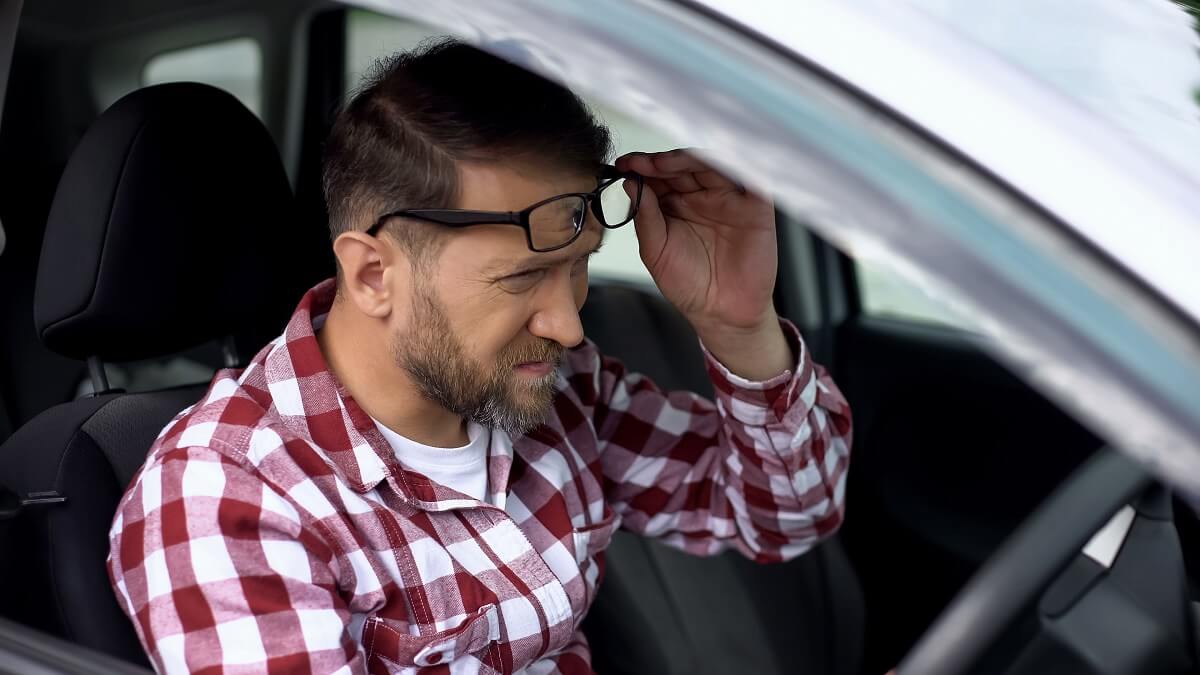How do you know if your eyesight is good enough to allow you to drive a car? Just because you can read this story doesn’t mean your eyes can safely adapt to driving in bright sunlight or cope with the glare of street lights or car headlights through a windscreen.
Between 2 and 3 per cent of Australian motorists are believed to have unacceptable eyesight for driving, according to the Road Safety Observatory (RSO), a body made up of representatives from road safety organisations.
A paper from the RSO says that “uncorrected, defective eyesight” was a contributory factor in seven fatal road accidents in 2016, 57 serious road accidents and 193 road accidents.
It says eyesight problems become more prevalent as we age.
Eyesight standards for driving
In Australia, eyesight standards for driving are determined by Austroads, a collective of the Australian and New Zealand transport agencies. Recently, Austroads announced minor changes to those standards.
The two main eyesight standards for driving a private (non-commercial) car or motorcycle are now:
- visual acuity (distance vision) – 6/12 or better in both eyes
- visual fields (peripheral vision) – at least 110 degrees.
Those standards are stricter for people who drive professionally and, generally, are most seriously tested at night.
Sadly, the reality is that, as we age, our night vision worsens.
According to the Dizziness and Headache Optometry Center in the US, we have fewer rods (light-sensitive cells in our eyes that distinguish between light and dark) to detect objects in low light and our eyes’ lenses become stiffer and cloudier as we age.
“Other conditions such as astigmatism can also make it difficult to see at night, affecting peripheral vision and depth perception and worsening glare,” it says.
“If you’ve noticed any changes in your eyesight, such as halo effects, blurred, dim, or cloudy vision, or increased glare, they could be early symptoms of eye problems that will make it harder for you to drive safely at night.
“Another one to watch out for is eye fatigue. Even if you can see perfectly well, that won’t do much good if you struggle to focus while on the road.”
Vision tends to deteriorate as we get older. In fact, Vision Initiative estimates that the number of people affected by vision loss triples with each decade over the age of 40. That’s because the lens inside your eye becomes less elastic with age, which makes it harder to focus on close objects.
Top five causes of vision loss
According to the RAC, most vision loss is because of five main conditions.
- Refractive error: where your eyes can’t clearly focus on close objects (hyperopia), far-away objects (myopia), or written words (presbyopia). It says: “Refractive error changes are often gradual, worsen over time, and can affect people of all ages – although presbyopia is more common in people over 40.”
- Age-related macular degeneration (AMD): this creates blind spots in the centre of your vision, which significantly impairs your driving ability. As the name suggests, it’s a disease heavily associated with ageing, with your risk tripling with every decade after 40. There are a range of treatment options, but AMD must be detected early via regular eye exams to limit vision loss.
- Glaucoma: this eye disease damages the optic nerve, leading to vision loss that often starts with your peripheral vision. Vision Initiative says it is usually so gradual that only half of Australians with glaucoma know they have it.
- Cataracts: these slowly cloud the lens inside the eye, eventually resulting in blurred vision that may not improve with prescription glasses. People with cataracts may also be more sensitive to bright lights, such as headlights when driving at night, or notice that colours appear more yellow or brown.
- Diabetic retinopathy: both type 1 and type 2 diabetes can cause diabetic retinopathy– an eye disease that affects the retina’s blood vessels and eventually causes patchy vision loss.
What you can do
To improve your driving vision, the Dizziness and Headache Optometry Center says there are several simple things you can do:
- ensure your windscreen is clean, both inside and out
- don’t drive tired
- eat foods such as carrots, sweet potatoes and spinach as they promote healthy eyesight
- on sunny days, wear sunglasses to reduce glare and improve clarity
- see an eye specialist to determine whether you need glasses to drive at night.
The International Agency for the Prevention of Blindness (IAPB) also recommends that you follow the 20/20/20 rule when using computer or TV screens to minimise the effects of digital eye strain.
“Every 20 minutes, look at something 20 feet (six metres) away for 20 seconds to give your eyes a screen break, which helps avoid eye strain and headaches.”
As for eye checks, it’s recommended to book in at least every two years, and annually if you’re over 65 or have diabetes.
Are you experiencing sight-related driving problems as you’re ageing? Do you have regular eye checks? Share your thoughts in the comments section below.
Also read: When should you stop driving?
Disclaimer: This article contains general information about health issues and is not advice. For health advice, consult your medical practitioner.

